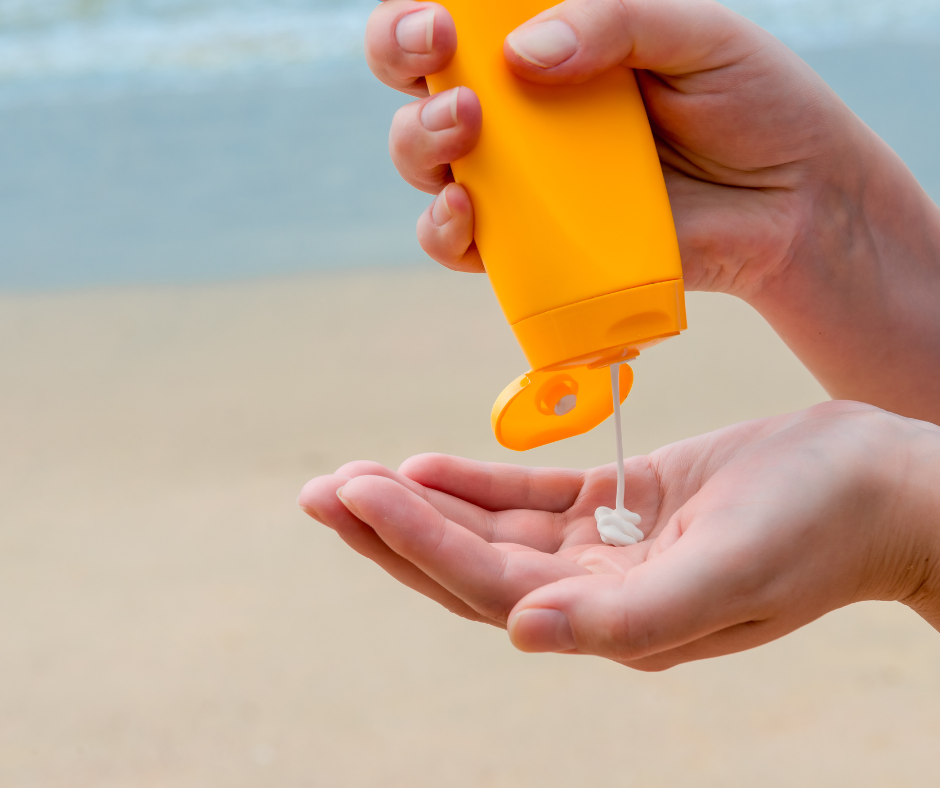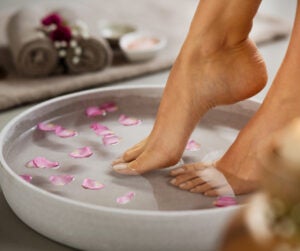-
3 Do’s and 3 Don’ts for Runners

You do not need to run every day of the week to benefit your health. Running just a few minutes each day may be good for you. Research shows it may even extend your life. No matter where you run, putting your safety first is vital. Below, our team of experts is sharing Dos and Don’ts for runners and outdoor athletes.
Do: Whether you’re an experienced runner or just getting started, begin the season by visiting your foot doctor.
With years of experience, including a hospital residency, your podiatrist is a medical expert and the best-qualified doctor to examine your feet, diagnose any existing or potential issues, and offer expert care.
Do: Build your endurance slowly.
Start with moderate length and low-speed runs, and work your way up to long runs at faster paces. Keep a journal to help you record your progress. It will help protect you from shin splints and other foot and ankle injuries. It will also give you something to work toward.
Do: Check out your route in advance and run on smooth, well-paved roads.
If you take a spill and can’t resolve the discomfort with over-the-counter medication and at-home RICE (rest, ice, compression, elevation) treatment, see your podiatrist as soon as possible.
Don’t: Don’t run in sneakers that have logged over 50 miles or are over a year old.
Be sure your footwear offers excellent cushioning and support. Remember that your foot size changes over the years.
Don’t: Don’t run with traffic if you are running in your neighborhood.
One of the most basic road rules is to drive/bike with traffic and run against it. You can only go so fast and be aware on two feet; increase your safety by seeing danger as it’s coming.
Don’t: Don’t overdo it.
Running is great, but don’t run yourself into the ground. Listen to your body; if you’ve pulled something, have shin splints, or have any other significant pain, it won’t help to pop a painkiller and run through it. Stop for a break when you need to, and get back up again eventually.
Schedule a comprehensive foot examination with Kentlands Foot and Ankle Center podiatrist Dr. Jon M. Sherman at our Montgomery office. Please call our office at 301-330-5666 to schedule your appointment.
-
Hello April– and National Foot Health Awareness Month!
 Our team of specialists strive to educate and support our patients with all issues related to the feet and ankles. Your feet work hard to support your body weight and take you wherever you want or need to go throughout the day, yet they are easily the most neglected part of the human body. This month our team wanted to do something special to raise awareness around foot health.
Our team of specialists strive to educate and support our patients with all issues related to the feet and ankles. Your feet work hard to support your body weight and take you wherever you want or need to go throughout the day, yet they are easily the most neglected part of the human body. This month our team wanted to do something special to raise awareness around foot health.These 10-foot facts everyone should know include facts about the anatomy of our feet, footwear, and foot care!
Foot Anatomy Facts
- Your feet have 26 bones, 33 joints, and more than 100 muscles, tendons, and ligaments.
- There are approximately 250,000 sweat glands in the feet, and on average, they excrete around 1 cup of moisture in one day. Wearing socks made of natural fibers, like cotton and wool instead of synthetic materials will help to create a more breathable environment.
- The 52 bones in your feet make up about one quarter of all the bones in your body.
Footwear Facts
- Wearing properly fitted footwear is very important to your foot health. If you are unsure of your size, you can have your feet measured before purchasing shoes. In addition, always try them on. Make sure to leave 1 inch or about a finger’s width between the longest toe and end of the shoe.
- Wearing heels can shorten or tighten your calf muscle. A tight calf can then lead to Achilles tendonitis.
- A pair of Custom foot orthotics can help to support, stabilize, and balance your feet, ultimately improving foot alignment and gait patterns.
- It is recommended to replace an orthotic every 2-3 years.
Foot Care Facts
- Wash your feet daily and dry well in between the toes. Finish with daily applications of a urea-based moisturizer. This simple practice helps to reduce bacterial and fungal load and keep the skin’s integrity at its best. Your skin is the first line of defense against infections.
- Trim your toenails straight across and not too short. This helps to reduce risk of breaks in the nail as well as Ingrown toenails.
- Walking is the best exercise for your feet. It also contributes to your general health by improving circulation, contributing to weight control. and promoting all-around wellbeing.
If you are experiencing chronic foot pain or discomfort in your lower extremities, call our Montgomery office at 301-330-5666 and schedule an appointment with our board-certified podiatrist Dr. Jon M. Sherman or visit our website for more information.
-
UV Safety Awareness Month

Summer is finally here! The great outdoors is beckoning. Many people tend to forget that their feet and ankles are just as vulnerable to harmful UV rays as the rest of their bodies. Sunlight is a potent source of ultraviolet radiation. Overexposure to the sun can cause a host of serious health issues such as skin cancer, heat exhaustion, and melanoma. At Kentlands Foot and Ankle Center, we want all our patients to feel safe and protected while still enjoying their favorite summer activities! Below you will find signs of skin cancer and tips and tricks to protect your feet from damaging UV rays.
Learn to recognize the signs of skin cancer. A helpful way to remember the signs of skin cancer is ABCDE:
- A is for asymmetry. Most moles are symmetrical. If you find a mole that is not symmetrical, bring it to your doctor’s attention.
- B is for borders. Be alert to a new or changed mole with irregular borders.
- C is for color. If you spot a mole with an unusual color, get it checked.
- D is for diameter. Any mole larger than the eraser on the tip of a pencil should be considered suspect.
- E is for evolving. Healthy moles don’t change.
How To Protect Your Feet from Damaging UV Rays
- Always Apply Sunscreen. Most dermatologists recommend using sunscreen with an SPF of at least 30. This will protect your skin from 97% of the sun’s harmful UV radiation.
- Wear Shoes That Protect Your Feet. Flip-Flops and sandals are a summer favorite. But they are not the best choice for protecting your feet from the elements. Shoes such as Crocs can protect your feet while also allowing your feet to breathe. Plus, they are waterproof!
- Cover Your Skin. Get settled under a tree or canopy. Alternatively, use breathable fabrics to keep you cool and protected from the sun!
- Avoid Peak Sun-Times. In most places, the sun is usually the strongest from 10 am to 4 pm. If you are outside during these times, take precautionary measures and incorporate all our tips.
- Drink Plenty of Water every day. Remembering to stay hydrated is especially important in the summer sun. The U.S. National Academies of Sciences, Engineering, and Medicine determined that an adequate daily fluid intake to replenish your body is: About 15.5 cups (3.7 liters) of fluids a day for men. About 11.5 cups (2.7 liters) of fluids a day for women. When perspiring, drink even more water.
Board-certified podiatrist Dr. Jon M. Sherman uses advanced technology and can treat a wide range of patients. To schedule an appointment, please call our Montgomery County office at 301-330-5666 or visit our website for more information.
-
Put Your Best Foot Forward

April is National Foot Health Awareness Month and it is also the perfect time to think about how much we count on our feet each day, and how important it is to develop healthy habits to keep them free of pain. According to the American Podiatric Medical Association, approximately 20 percent of the U.S. population has at least one-foot problem annually. At Kentlands Foot and Ankle Center, our podiatrist, Dr. Jon M. Sherman, is Board Certified in Foot Surgery by the American Board of Podiatric Surgery. Dr. Sherman is also a Fellow of the American College of Foot and Ankle Surgeons, all of which set him apart from other podiatrists.
Fun Facts About Feet
- Each foot is composed of 26 bones, 33 joints, and over 100 muscles and tendons.
- Together both feet contain 1/4 of the bones in the entire body.
- The average person, over their lifetime, will walk approximately the same distance as if they had walked around the earth 4 times.
- 5 times a person’s body weight is transmitted through each foot with every step!
How To Maintain Healthy Feet
Do:
- Try foot massages or reflexology.
- Soak your feet in Epsom salt if they are sore.
- Change your socks daily.
Don’t:
- Share footwear
- Wear poor-fitting shoes
- Try “DIY” fixes for your foot problems
When To Visit a Podiatrist
The field of podiatry strives to improve the overall health and well-being of patients by focusing on preventing, diagnosing, and treating conditions associated with the foot and ankle. It is time to see a podiatrist anytime you have foot or ankle discomfort, changes in the appearance of your feet, abnormal growth, an injury, or a medical condition that affects your feet. It is also very important to have an annual check-up with your podiatrist to maintain healthy feet.
To schedule an appointment at our Gaithersburg, MD office, please call (301) 330-5666 or visit our website for more information.
RECENT POSTS
categories
- Uncategorized
- Featured Articles
- Foot Disorders
- Broken Ankle
- Broken Toe
- Fracture
- Foot Health
- Foot Care
- Arthritis
- Foot Pain
- Skin Cancer
- Podiatry Appointment
- Custom Orthotics
- Podiatrist
- Diabetes
- Gout
- Heart Health
- National Nutrition Month
- National Foot Health Awareness Month
- Foot Safety
- Foot and Ankle Injuries
- Falls Prevention
- Chronic Heel Pain
- Shoes
- Laser Therapy
- Quoted
- Physical Therapy
- KeryFlex
- Sweat
- Summer Foot Care
- Sports Injury
- ESWT
- Fungal Toenails
- Bunion
- Plantar Fasciitis
- PinPointe Laser


